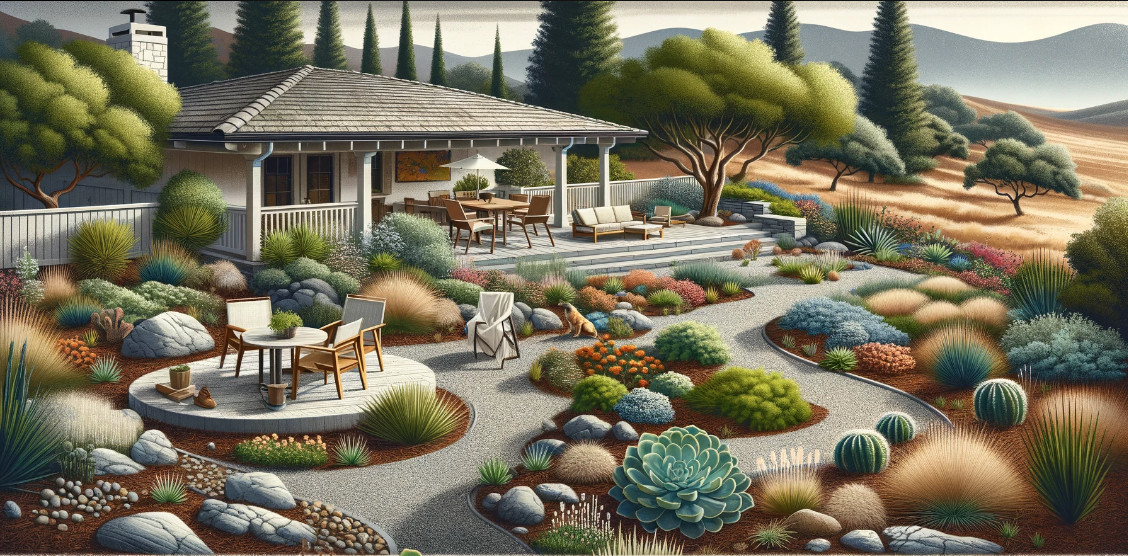Northern California’s alternating cycles of drought, atmospheric river deluges, scorching heat waves and occasional hard freezes demand residential low maintenance landscaping resilient enough to withstand such extremes. By thoughtfully selecting tough climate-appropriate plants, mindfully engineering durable hardscapes, and holistically supporting soil and drainage, Bay Area homeowners can craft outdoor living spaces with minimal upkeep needs.
Low Maintenance Landscaping Options:
Smart Plant Selection
Choose native, Mediterranean and other flora genetically equipped to handle the Bay Area’s intense seasonal shifts without significant water or pruning. Evergreen stalwarts like live oak, toyon, sage, buckwheat, California lilac, aloe and red hot poker thrive with little input. Group by irrigation needs, situating more water-dependent roses, fruit trees and veggies separately on drip while lavender, yarrow, agave and sage flourish without.
Durable Hardscaping
Withstand extreme rainfall erosion and drought conditions by installing resilient pathways, patios and surfaces. Permeable concrete and pavers encourage drainage; non-mortared stone and gravel permit soil settling and recharging. Large boulders divert deluges without displacement. Composite decking tolerates heat and seasonal movement. Non-flammable crushed rock mulches protect structures during fire season.
Healthy Living Soils
Amending native soils with aged compost, mycorrhizae fungi, biochar and organic fertilizers fosters microbial communities and drainage. Such living soils retain moisture and nutrients critical for stabilizing plants and environments during periods of harsh extremes. Drought-stressed plants draw needed water from soil reserves.
In conclusion, it is beneficial to plan low maintenance landscaping utilizing durable plants and materials for Northern California’s intense weather. Bay Area gardeners reap rewards of lush, vibrant yards with minimal upkeep – regardless what Mother Nature throws our way next! How have you adapted your landscape for our region’s unique conditions? Please share your lessons learned and design tricks below.

